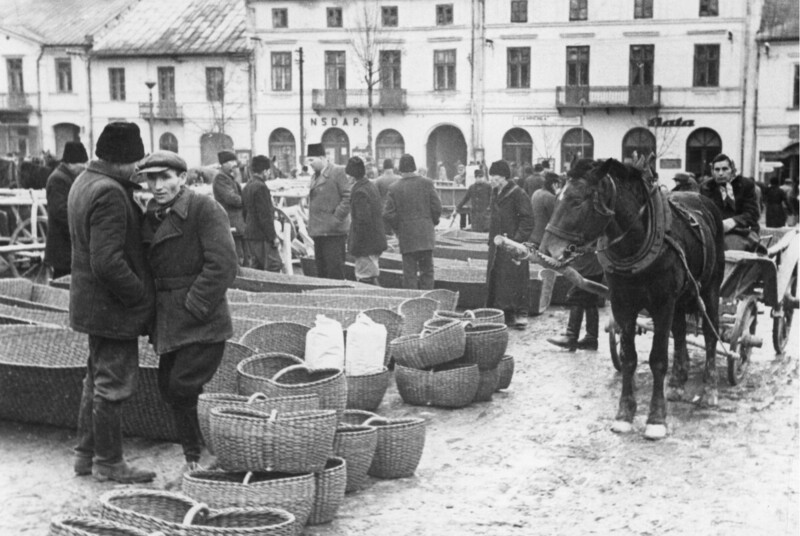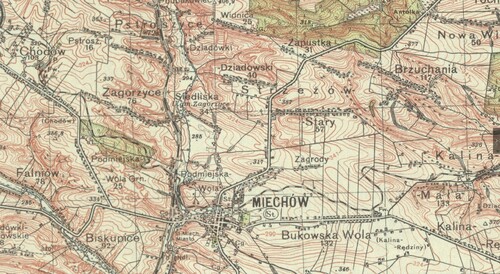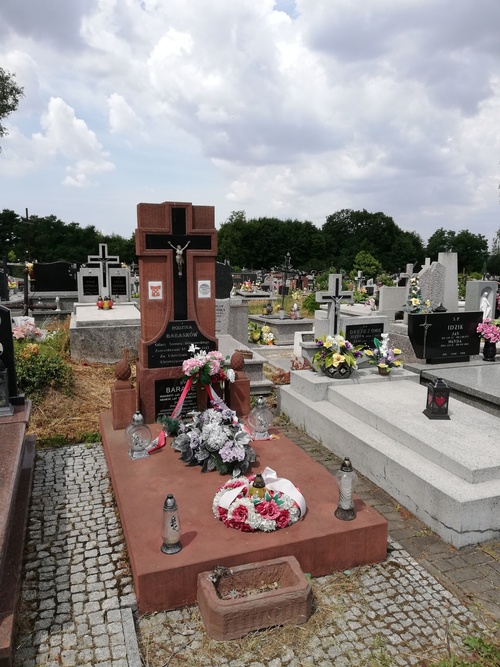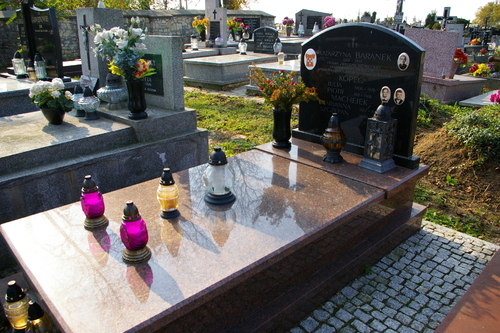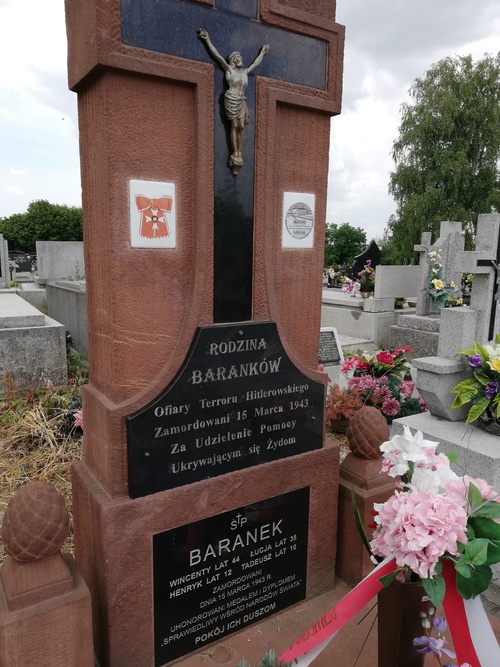On the night of 16/17 March 1942, a murderous operation commenced with the goal of exterminating the Jewish population living in the General Government (GG). In June of the same year, the German murderers named this operation “Aktion Reinhardt”. By the end of 1942, it had resulted in the majority of Jews living in the GG being killed, while during the following year, the last functioning remnants of ghettos were liquidated. The few Jews who were still alive at that time could only stay in the labour camps they were assigned to.
From the beginning of this German crime, the machinery of extermination was focused on catching all those who tried to survive on the “Aryan side” (quasi-legally or in hiding). There were also repressions targeted at people who offered them help.
The crime
The story of the murder of the Baranek family could be reconstructed thanks to the accounts given by eyewitnesses to those events which can be found, among other places, in the files of the investigation conducted into this case by the Regional Commission to Investigate Nazi Crimes in Cracow in the 1970s. Based on these files, we know that on the morning of 15 March 1943, a car with German officers, most of them Sonderdienst members, arrived in front of the Baranek family house. Among them was at least one policeman who - as the witnesses testified - was in charge of the whole operation.
According to Jan Kania, a resident of Siedliska, “one of the policemen went to the village and rounded up the men”. The local village leader was also forced to take part in the operation. The people gathered on the Baranek family farm were ordered by the functionaries to take part in the manhunt. “The Germans ordered us to remove the straw from the attic over the Baraneks' pigsty,” reported one of the witnesses. However, they did not find anybody in there.
They started to search other places. “We went to the yard,” testified Bronisław Bazior, “and at some point, the policeman noticed that part of the wall under the roof of the pigsty was missing, and that that place was covered up with boards. He ordered one of his subordinates to remove the board and look inside. After removing it, they found that between the Baranek family’s house and the adjoining pigsty there was an additional wall (...).” This was the hiding place of four men, aged about thirty. These Jewish fugitives were found by the officers and shot down near to where they had been sheltered.
After some time, the Germans took Wincenty Baranek and his wife Łucja to the barn and shot them. They also brought the children to the place of their parents’ death, two sons – Henryk and Tadeusz. “They ordered them to kneel down and shot them in the back of the head,” reported the witnesses.
Not every member of the household was killed on that day, however, because the Germans could not find Wincenty’s stepmother Katarzyna, née Kopeć, who hid in a narrow gap between the stove and the wall. The Germans told the gathered villagers that they had 24 hours to bring Katarzyna to the German post in Miechów, and they threatened that if they did not, then the entire village would be punished with the shooting of several dozen people selected by the Nazi occupiers. According to some accounts, they also threatened to burn down the entire village. The residents were so terrorised that they brought Katarzyna Baranek to the place indicated by the Germans.
After many years, this event was recollected by one of its participants in the following way: “Indeed, I took her. There were three of us. The horses were mine. What could we do? Hand over 40 people to die? God will judge me but I am not guilty of this death. I was under duress.” We do not know the details as to her ultimate fate but we can presume that Katarzyna was also quickly murdered.
The Germans ordered that the corpses of the Jews be buried near the barn. They consented to the burial of the Baranek family in the parish cemetery in Miechów, yet they forbade any funeral ceremony from being held.
The genesis of the crime
According to Krystyna Samsonowska, who examined the drama which took place in March 1943 in Siedliska, Wincenty Baranek undertook to hide the Jewish Gottfried family (the father and his four sons, tailors whose first names could not be established) during the German occupation at the request of Bronisław Falencki, a Home Army soldier and employee at the court in Miechów. He was most probably responsible for providing Jews with false documents. He was also said to have helped some of them find hiding places, which could have happened in the case of the Gottfried family.
According to Samsonowska, it is possible that Falencki was to blame for the operation at the Baranek family’s farm. After being arrested and brutally interrogated, he may have turned in the Baranek family as those who were hiding the Jews. It is possible that he was trying to save his own life in this way, breaking down as a result of torture during the investigation (Falencki had earlier been betrayed by a certain Maria Bochner, whom he had provided with false documents). On the other hand, it is also possible that the manhunt was due to the denunciation by some other person.
In the years 1947–1948, the proceedings were pending before the Regional Court in Cracow where Falencki was accused of collaboration with the German occupation authorities. Testimony in this investigation was also given by, among others, Jakub Bochner, who was the chairman of the Jewish Committee in Miechów in 1945 and examined the case of the crime in Siedliska. In his opinion, Falencki could not have contributed to the denunciation of the Baranek family as he had not known that they had been sheltering the Jews. Even more interestingly, Bochner indicated that the Gottfrieds had not been cautious enough, e.g. they had been using loud sewing machines at night (this matter actually reappeared in accounts given by other people).
It should be added that during the search at the Baranek family farm, the officers did not find all the Jews hiding there. A fifth man was not in the village at that time. His later fate is unknown, however.
The Righteous
Do we know why the Baranek family decided to give shelter to the Jewish fugitives? The answer to this question is very difficult. In Zofia Olas’ article describing the crime against the Baranek family, published in the work by Władysław Bartoszewski and Zofia Lewinówna entitled Ten jest z Ojczyzny mojej. Polacy z pomocą Żydom 1939–1945 [This is my Homeland. Poles Who Helped Jews 1939–1945], we can find an opinion about Wincent Baranek expressed by one of the witnesses to those tragic events: “I don’t think that he did it out of courage, but out of piety (...) Fear? Oh yes, he was filled with fear.” It seems that his wife Łucja could have been a great support for him, she was remembered by the neighbours as an “enlightened person” and “exemplary housewife”.
According to the testimony given by the residents of the village, the boys - Henryk and Tadeusz - were also involved in helping: “When it was necessary to buy food, they would send those little boys. They were so shy, and they were always together. (...) They would both go somewhere with baskets. (...) and came back, stooping under the weight of the baskets. So we looked into the baskets and we found eggs, butter and chicken there. After those events, we realised that they were buying food for those Jews.” The people gathered on the Baranek farm on 15 March 1943 could not forget the shocking image of the last moments of the boys’ lives. “It was only when they took the children out and led them to the barn, and they were holding hands and shaking with fear, that we started to cry.”
The inscription on the tombstone commemorating the murdered Baranek family in Siedliska reads that "they paid the ultimate price for aiding fellow human beings". In spite of many years of study, we still do not know the full scale of repressions against rescuers offering help to Jewish fugitives. In 2012, the Yad Vashem Institute in Jerusalem honoured the Baranek family with the title of the Righteous among the Nations.
Roman Gieroń, Jakub Ryba
